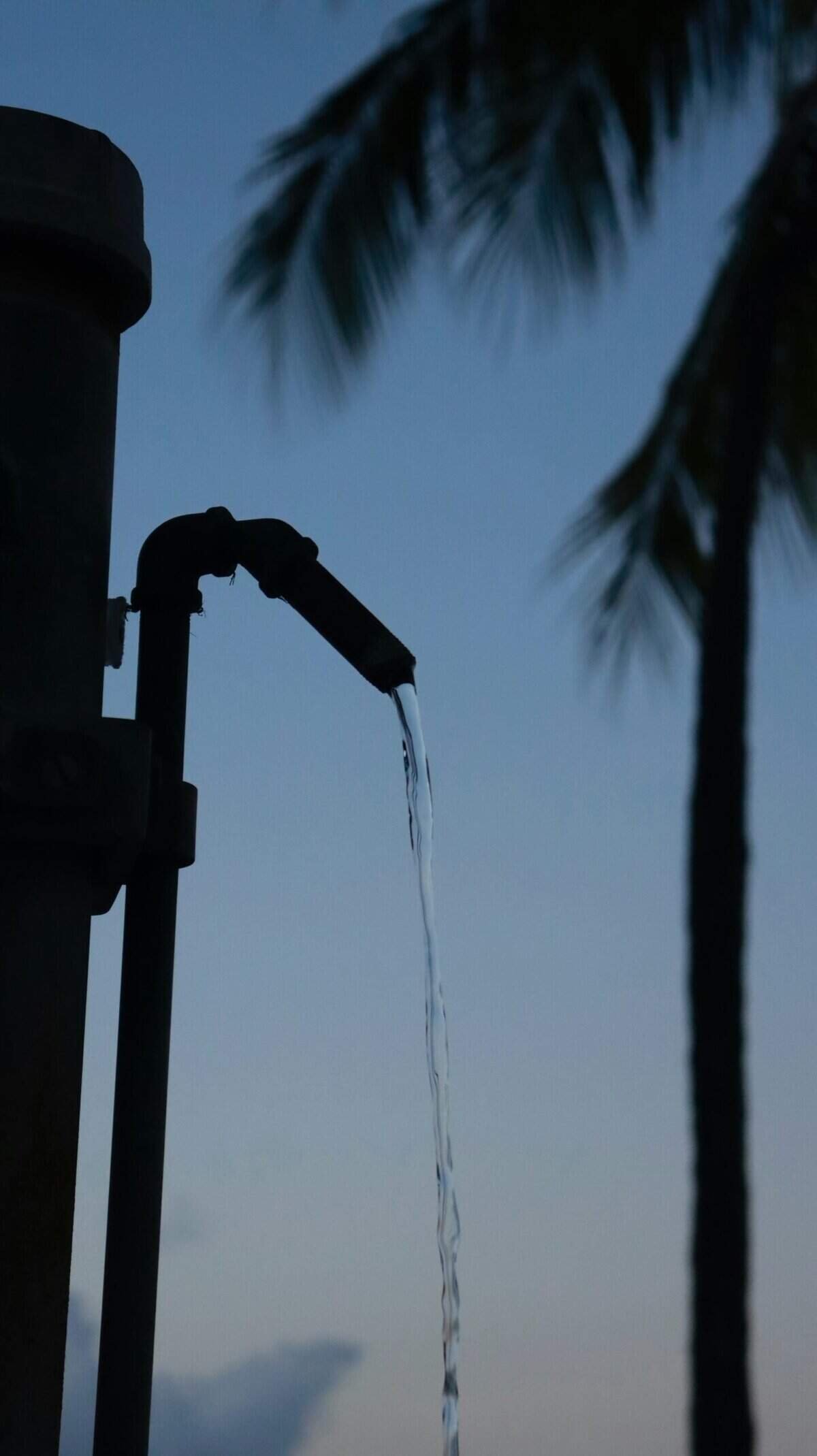Are you confident the water coming from your well is safe for you and your family to drink?

What Contaminants Should I Test For In My Well Water?
You rely on your well for a critical part of daily life, and testing helps you confirm that your water is safe and healthy. This article walks you through which contaminants to test for, why they matter, how often to test, and what to do if a problem shows up.
Why testing matters
Testing your well water gives you objective information about what’s actually in your water and whether any contaminants exceed health-based guidance. Regular testing helps you spot new problems early, protect vulnerable household members, and choose the right treatment if needed.
When you should test your well
Knowing when to test will help you catch problems at the right time, rather than reacting to symptoms later. Certain times and events increase the risk of contamination and should trigger testing.
New well or property purchase
If you’re buying a property with a private well or drilling a new well, test before you move in or use the water. A full baseline panel helps you know what treatment or maintenance might be needed before you rely on the well.
Annually
At minimum, test for bacteria and basic chemistry at least once a year. Annual checks for total coliforms, E. coli, nitrate, and total dissolved solids (TDS) are common recommendations to protect daily health.
After events that can affect water quality
You should test after heavy rain, flooding, surface water intrusion, a nearby septic failure, well repairs, or construction near your well. These events can introduce bacteria and other contaminants quickly.
If household members are vulnerable
If someone in your household is pregnant, an infant, elderly, or immunocompromised, test more frequently and consider expanded testing panels. Vulnerable groups are more affected by contaminants like nitrate, lead, and microbial pathogens.
Types of contaminants to test for
Contaminants fall into broad categories that help you prioritize tests: microbiological, inorganic chemicals, organic chemicals, radionuclides, emerging contaminants like PFAS, and physical/aesthetic parameters. Each group carries different health risks and treatment options.
Microbiological contaminants
Bacteria, viruses, and parasites represent the most immediate health risk from well water because they can cause gastrointestinal illness and outbreaks. Tests usually look for indicator organisms such as total coliforms and E. coli; if those are found, further testing for specific pathogens may be necessary.
Inorganic chemicals (metals and salts)
Inorganic contaminants include nitrate, nitrite, arsenic, lead, iron, manganese, fluoride, and other metals. These typically come from natural geology, agricultural runoff, septic systems, or corroding plumbing. Chronic exposure to some inorganics can cause long-term health issues such as developmental problems or cancer.
Organic chemicals (VOCs, pesticides, herbicides, petroleum)
Volatile organic compounds (VOCs) and semi-volatile compounds come from industrial solvents, gas stations, fuel storage, agricultural chemicals, and household products. They can be toxic at low concentrations and often require specialized testing and targeted treatment systems.
PFAS (per- and polyfluoroalkyl substances)
PFAS are persistent “forever chemicals” used in many consumer and industrial products. They resist breakdown, can contaminate groundwater, and have been linked to health effects like immune and developmental issues. Specialized laboratory methods are required to detect PFAS at the low concentrations that matter for health.
Radionuclides (radon, uranium)
Radioactive elements such as uranium and radon can enter groundwater through natural geological sources, particularly in certain rock types. Long-term exposure to radionuclides can increase cancer risk, so testing is important in regions with known radioactivity issues.
Physical and aesthetic parameters (pH, hardness, turbidity, TDS)
These parameters don’t always pose direct health risks, but they affect water taste, staining, plumbing corrosion, and the efficiency of treatment systems. Monitoring pH, hardness, turbidity, and total dissolved solids helps you catch physical changes and manage equipment.

Common contaminants and what they mean for you
You need to know which contaminants are most likely to appear in well water and what immediate and long-term risks they present. The table below summarizes common contaminants, their typical sources, health effects, when to test, and common treatment options.
| Contaminant | Common sources | Potential health effects | When to test | Typical treatments |
|---|---|---|---|---|
| Total coliforms / E. coli | Surface runoff, septic systems, wildlife | Gastrointestinal illness; E. coli indicates fecal contamination | Annually and after floods/repairs | Shock chlorination, continuous disinfection (chlorine, UV), filtration |
| Nitrate (NO3-) | Fertilizer, septic systems, manure | Methemoglobinemia (“blue baby” syndrome) in infants; other health risks | Annually, more often if near agriculture or infants present | Anion exchange, reverse osmosis, ion-selective treatment |
| Arsenic | Natural geology, mining | Cancer, skin lesions, developmental effects | At least every 3–5 years; more often if geology suggests risk | Reverse osmosis, adsorption (media), coagulation/filtration |
| Lead | Corroding plumbing, solder, fixtures | Developmental effects in children, neurological issues | Test if home built before 1986 or if you have old plumbing; after plumbing changes | Point-of-use filters (certified for lead), replace plumbing, corrosion control |
| Iron & Manganese | Natural geology | Staining, taste, odor; aesthetic issues | When water appears discolored or tastes metallic; baseline testing every few years | Oxidation/filtration, greensand, aeration, water softening |
| Sulfate | Natural geology, industrial discharge | Taste, laxative effect at high concentrations | If you notice rotten-egg odor or after geology reports | Reverse osmosis, ion exchange (limited), blending |
| VOCs (benzene, TCE, PCE, MTBE) | Gas stations, industrial spills, solvents | Cancer, liver/kidney effects, neurological issues | If near potential sources or prior contamination; baseline when buying property | Granular activated carbon (GAC), air stripping, advanced oxidation |
| Pesticides & Herbicides | Agricultural runoff, lawn care | Various, including endocrine disruption and cancer risk | If near farms or agricultural land; seasonal testing after application | Granular activated carbon, reverse osmosis |
| PFAS | Firefighting foam, industrial releases, consumer products | Immune effects, developmental issues, increased cholesterol | If near industrial sources, airports, or firefighting training sites | Granular activated carbon, ion exchange, reverse osmosis |
| Uranium | Natural geology | Kidney damage, cancer risk | In areas with uranium-bearing rock; every few years | Reverse osmosis, anion exchange, lime softening |
| Radon (in water) | Natural geology | Increases radon in air when water is used; lung cancer risk | If regional geology suggests radon; test every few years | Aeration systems, activated carbon (with disposal considerations) |
| Turbidity | Suspended solids from surface water, disturbed well | Indicator of microbial contamination and filter clogging | When water is cloudy or after storms | Sediment filtration, well maintenance |
| pH | Geology, treatment chemicals | Corrosive water can leach metals; scaling | Test when corrosion or staining is noted or annually | Neutralizing filters, acid injection, corrosion control |
Nitrate and nitrite
Nitrate commonly comes from fertilizer, septic systems, and animal manure. High nitrate levels are dangerous for infants because they impair blood’s oxygen-carrying capacity; test annually if you have young children or live near agriculture.
Arsenic
Arsenic can occur naturally in groundwater in many regions and is associated with long-term cancer risk and skin changes. If your area’s geology is known for arsenic or there’s a history of mining, include arsenic in your test panel.
Lead
Lead rarely originates in groundwater itself but often comes from corroding plumbing and fixtures. If your home was built before lead plumbing restrictions or you’ve made recent plumbing repairs, test for lead and consider point-of-use filters certified to remove lead.
Bacteria (coliforms and E. coli)
Bacterial contamination is common after heavy rains, flooding, or if well casing is compromised. If total coliforms or E. coli are present, treat immediately and conduct follow-up testing after corrective action.
VOCs and petroleum products
If your well is near a gas station, underground storage tank, industrial site, highway, or areas with frequent fuel use, test for VOCs and petroleum hydrocarbons. These contaminants can be harmful even at low concentrations and may require memory of nearby spills or leaks.
PFAS
PFAS contamination is increasingly detected and regulated in some states. If you’re near airports, firefighting stations, or certain industrial facilities, include PFAS in your testing plan and use specialized labs that can measure parts-per-trillion concentrations.
Radon and uranium
If you live in an area with uranium-bearing rock or granite bedrock, test for radionuclides. Radon in water can also increase indoor air concentrations when water is used for showering or cooking, so consider this when radon in air tests are high.
How to test your well
Testing requires proper planning, correct sample collection, and selecting an accredited lab. Doing it right improves result reliability and helps you make the right decisions.
Finding a certified laboratory
Use state or local health department resources to find labs certified for drinking water testing. Certified labs follow standardized methods and reporting formats that make interpreting results and comparing with regulatory levels straightforward.
Collecting a sample correctly
Follow the lab’s sampling instructions exactly. For bacterial testing, use the sterile bottle supplied by the lab; don’t disinfect the faucet before sampling unless instructed, and collect from cold water lines that are directly tied to the well, not from softened or treated points.
Sample preservation and chain of custody
Many tests require rapid delivery and temperature control (often on ice) and have strict hold times. Maintain chain-of-custody documentation when necessary — especially if testing for legal or real estate transactions — to ensure sample integrity.
Interpreting the results
Compare your results to EPA maximum contaminant levels (MCLs) and state guidance as a starting point. Remember that many contaminants have different health-based thresholds and that private wells aren’t regulated by the EPA in the same way as public water systems; use the MCLs as guidance and consult public health officials when levels exceed benchmarks.

Recommended testing frequency and panels
Frequency depends on contaminant type, well history, nearby activities, and household vulnerability. The table below provides a practical testing schedule you can adapt.
| Test or Panel | Recommended frequency | Rationale |
|---|---|---|
| Bacteria (Total coliforms & E. coli) | Annually and after storms/repairs | Rapid health risk; easy to change with shock chlorination |
| Nitrate / Nitrite | Annually; more often if pregnant/infant or near agriculture | Acute infant risk; agricultural contamination can vary seasonally |
| Basic chemistry (pH, hardness, TDS, conductivity) | Every 1–3 years | Aesthetic issues and system performance |
| Inorganic metals (arsenic, lead, uranium, fluoride) | Every 3–5 years, or sooner if local risk | Chronic health risks; geology-driven presence |
| VOCs & petroleum hydrocarbons | Every 1–3 years if near potential sources | Often linked to local sources and spills |
| Pesticides and herbicides | Annually during or after application season if near farms | Seasonal agricultural application patterns |
| PFAS | If near potential sources; baseline and as recommended by state | Emerging contaminants; testing frequency depends on local risk |
| Radon (in water) | Every few years in high-radon areas | Natural geology-driven; affects indoor air when released |
| Turbidity & sediment | As needed when you see cloudiness or after storms | Visual indicator of well integrity or surface influence |
If you’re unsure which tests to run, contact your state or local health department for region-specific recommendations and sample labs.
What to do if your water fails a test
A failed test is actionable information. You can take immediate steps to reduce exposure, then plan longer-term fixes.
Immediate steps
If bacteria or other acute contaminants are present, stop drinking the water and use bottled water or an appropriate alternative for drinking, cooking, and brushing teeth. Avoid using the water for infant formula or for immunocompromised individuals until the issue is resolved.
Boil water advisories and when to follow them
If you get a notice from health officials, boiling water for at least one minute will kill bacteria, viruses, and parasites and make water safe for drinking. Boiling does not remove chemical contaminants like nitrate or VOCs, so don’t rely on boiling for chemical contamination.
Shock chlorination for bacteria
Shock chlorination of the well and distribution lines is a common remedy for fecal contamination. Follow a certified well contractor or health department’s instructions for concentration and procedure, and then retest to confirm bacteria are eliminated.
Long-term treatment options
If tests show chronic chemical or metal contamination, install an appropriate treatment system such as reverse osmosis for arsenic and nitrate or granular activated carbon for many VOCs and PFAS. Sometimes the most practical long-term solution is connecting to a public water system if one is available and feasible.
Re-testing after treatment
After any corrective action, retest to confirm contamination has been reduced to acceptable levels. Follow up annually or per the recommended schedule for the contaminants in question, and maintain your treatment system per the manufacturer’s instructions.

Choosing water treatment systems
Choosing the right system means matching the contaminant, the level of contamination, and your household’s needs. You’ll also need to consider maintenance, operating costs, and certification.
Point-of-use vs point-of-entry
Point-of-use systems treat water at a single tap (e.g., under-sink reverse osmosis) and are ideal for drinking water concerns like lead or arsenic. Point-of-entry systems treat all water entering your home (e.g., water softeners, whole-house carbon filters), which is useful for aesthetic problems or contaminants that affect bathing and appliances.
Common treatment methods and what they remove
Different technologies are designed for different contaminants. You should select systems certified by independent bodies (e.g., NSF/ANSI) for the specific contaminant you want removed and follow maintenance schedules to ensure performance.
| Treatment type | What it removes or reduces | Notes |
|---|---|---|
| Reverse osmosis (RO) | Inorganics (arsenic, nitrate, fluoride), some VOCs, reduced TDS | Effective for many dissolved contaminants but wastes water and needs prefiltration |
| Granular activated carbon (GAC) | VOCs, pesticides, some PFAS, taste/odor | Effective for many organic contaminants; may need frequent media replacement for PFAS |
| Ion exchange / water softeners | Hardness (calcium, magnesium), some radionuclides, nitrate (specialized resins) | Softening replaced hardness with sodium; specialized resins needed for nitrate/PFAS |
| UV disinfection | Viruses, bacteria, protozoa | Kills microbes but doesn’t remove chemicals; requires clear water (low turbidity) |
| Chlorination | Bacteria, some viruses | Effective disinfectant but creates disinfection by-products and needs careful dosing |
| Air stripping | VOCs, radon (in water) | Effective for volatile contaminants; requires proper off-gas handling |
| Oxidation & filtration | Iron, manganese, some organics | Useful for oxidizable contaminants; often combined with filtration |
Consider certified product listings and speak to professionals familiar with private well systems when choosing a solution.
Cost considerations and funding help
Testing and treatment costs vary widely based on the contaminants and solutions you choose. Basic bacterial tests are often inexpensive, while full VOC or PFAS panels and advanced treatment systems can be costly.
Grants and assistance programs
Some states, counties, or non-profit organizations offer financial assistance or low-interest loans for well testing and treatment, particularly for households with low income or for systems needed to protect children and pregnant women. Contact your local health department or state environmental agency to learn about available programs.

Record-keeping and maintenance
Keep a log of test results, sampling dates, treatment installations, maintenance events, and well repairs. Good records help you spot trends, comply with any grant requirements, and make informed decisions about future testing and upkeep.
Practical tips for reliable testing
- Use the lab’s sample containers and instructions; do not substitute jars from around the house.
- Don’t run or shock-treat the system before bacterial sampling; the test should reflect the water your household uses.
- Label samples clearly with well ID, date/time, and contact information.
- Transport samples promptly and on ice if required, and observe hold times.
- Take photos of changes in water color, staining, or well infrastructure to support troubleshooting.
Frequently asked questions
How do I know which tests are essential for my well?
Start with a basic panel: total coliforms/E. coli, nitrate, pH, TDS, and hardness. Then expand testing based on local geology, nearby land use (agriculture, industry), age of plumbing, and household health needs. Your state health department can advise on regional priorities.
Can I test my well myself with home kits?
Some home kits can provide a quick check for parameters like pH, hardness, or basic bacterial screening, but lab-based tests are more accurate and legally recognized. For contaminants that affect health (nitrate, arsenic, PFAS, VOCs), rely on certified laboratories.
What if my well supplies water to multiple homes?
If your well serves more than one household, it’s especially important to have a clear testing and maintenance plan and to ensure that everyone follows agreed procedures for treatment, testing costs, and emergency response.
Checklist: What to test and when (quick reference)
| Situation | Minimum tests to run |
|---|---|
| New well or buying a property | Full baseline: bacteria, nitrate, metals (including arsenic and lead), basic chemistry, VOCs if nearby sources |
| Annual check | Bacteria, nitrate (if risk), TDS, pH, hardness |
| After heavy rain/flooding | Bacteria, turbidity, nitrate (if nearby sources) |
| If water smells or tastes odd | Bacterial test, VOCs (if fuel smell), iron/manganese (metallic tastes or staining) |
| If babies/pregnant women in home | Nitrate, arsenic, lead, bacteria; consider PFAS and VOCs if risk exists |
Key takeaways
You control your private well’s safety by testing appropriately, taking corrective actions when results show problems, and maintaining records and treatment systems. Annual bacterial testing is the cornerstone of a safe well program, with periodic chemical testing tailored to local risk factors and household needs.
Testing gives you the information you need to protect your health and your home’s plumbing and appliances. If a result is concerning or you don’t understand the implications, contact your state or local health department, a certified water-treatment professional, or an accredited laboratory for guidance and next steps.
